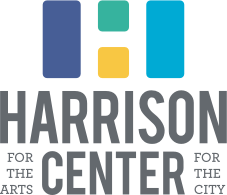Rise Up: A Protest Art Show
Several months ago, the police killing of George Floyd rocked our nation. One of the most shocking instances of police brutality captured on camera in recent memory, it prompted the biggest nationwide wave of demonstrations since the 2012 shooting of Trayvon Martin. As more of these stories are brought to light, the problem of police brutality seems more urgent than ever. Most of us have found ourselves asking, “What can I do?” In cities across the nation, people are taking action in the best way they know how: protest. From boycotting businesses, gathering in front of policymakers’ homes and offices, to more extreme measures like taking down statues, Americans have made it clear that they are not letting this issue get swept under the rug any longer.
Historically, protest has been an important way for ordinary people to enact change, especially on issues of racial injustice. Many have drawn parallels between the protests of today to those of the 1960s and 70s. Unfortunately, we are still dealing with the same problems like racial and gender inequity that we were several decades ago. We also are still seeing the wide array of reactions from the media that depict protestors in a variety of ways, from heroes to criminals.
Naturally, this has stirred up the debate: are protests really helpful? What can a protest accomplish? Who should get involved?
In response to these questions, this month a group of artists came together to make a body of work representing what protesting racial injustice means to them. This show encourages us to think more deeply about the purpose of protest and how it evokes change.
Trayvon Martin/Skittles and Arizona Watermelon Drink by Bruce E. Armstrong
When you walk into Speck Gallery through the double doors, one of the first things you see is a bag of skittles and a can of Arizona Watermelon drink. At first, it looks like someone left their vending machine purchases on a pedestal. But these unassuming items are what unarmed, 17-year-old Trayvon Martin left his house to buy the night that he was shot and killed by a neighborhood watch patrolman. Artist Bruce E. Armstrong used these objects to remind us of the senselessness of that act. A painting by Armstrong hangs nearby of the Statue of Liberty with the words “Black Lives Matter” written on a mask over her mouth.
Detail of “IF NOT NOW, WHEN?” by Bruce E. Armstrong
Artist Gigi Salij also references Trayvon Martin in her startling collages which show Trayvon’s smiling face overlaid on top of shooting targets. One says in large letters that cover the canvas “Why are you following me?” which were Trayvon’s last words.
Why Are You Following Me? (Trayvon’s Last Words), by Gigi Salij
Another striking piece is Barbara Hosein’s - “When Black People are Hurting, White People Join an Antiracist Book Club.” It features a copy of the 2019 book “How to Be an Antiracist” by Ibrim X. Kendi which surged in popularity again in the last few months. The book is open to a middle page and overlaid with a cut-paper silhouette of a man’s face that resembles George Floyd.
The work speaks to white people who have found themselves wanting to educate themselves on racial issues. It’s good that we want to be informed to make up for where our privilege has kept us ignorant. But all too often, we consider reading up on the subject to be our “good deed” toward ending racism and fail to take more decisive action. We leave the riskier, tougher work to the people who are already bearing the brunt of the hurt.
When Black People Are Hurting, White People Join an Antiracist Book Club by Barbara Hosein
As we continue to ponder these issues as a nation, making, sharing, and taking in art is a powerful way of processing the feelings that arise. This beautiful and thought-provoking show will hang in Speck Gallery until the end of August. You can make an appointment to see the show in person by emailing Sarah at speacock@harrsioncenter.org or view the pieces online, where you can also make purchases. Be sure to check it out!




